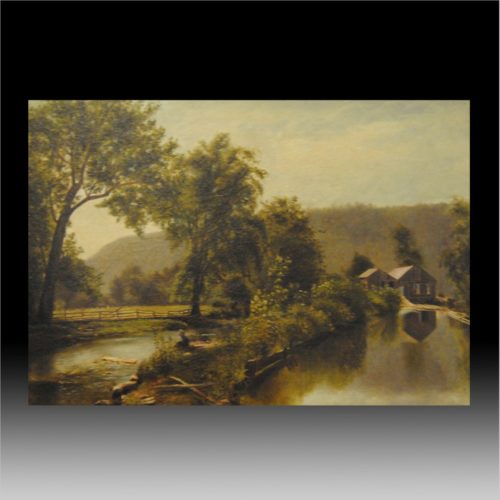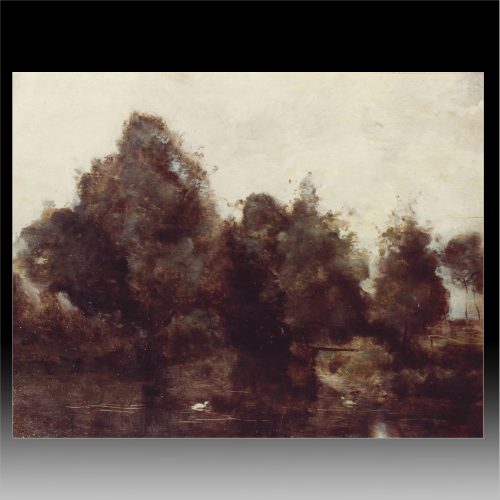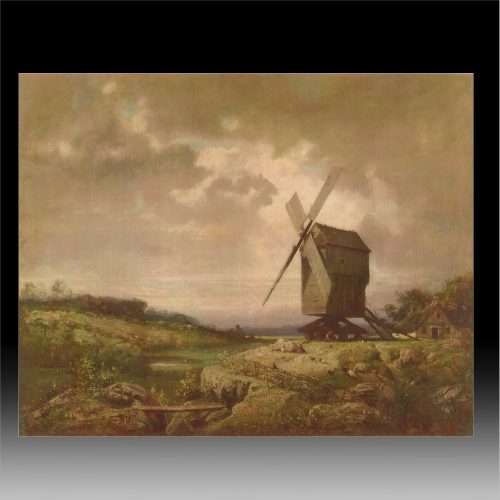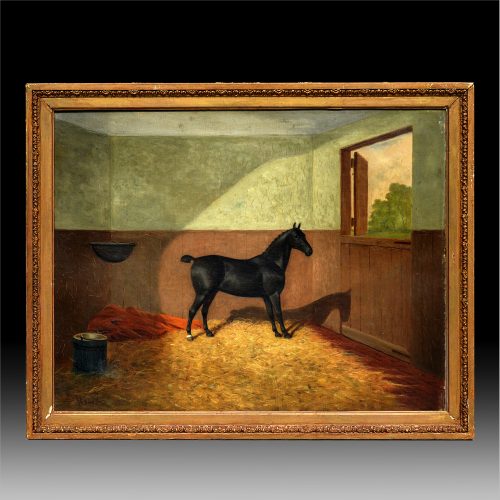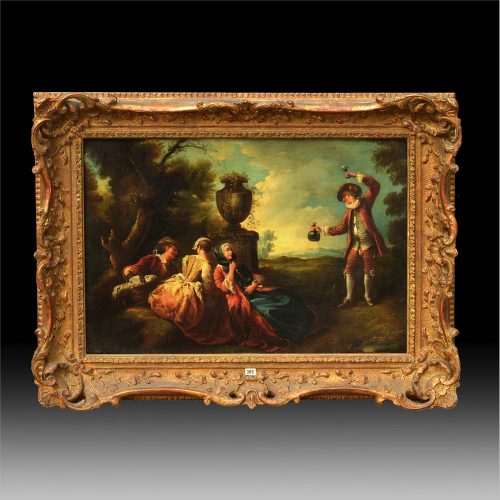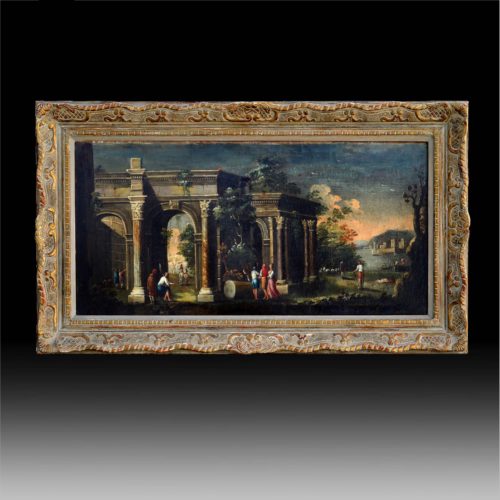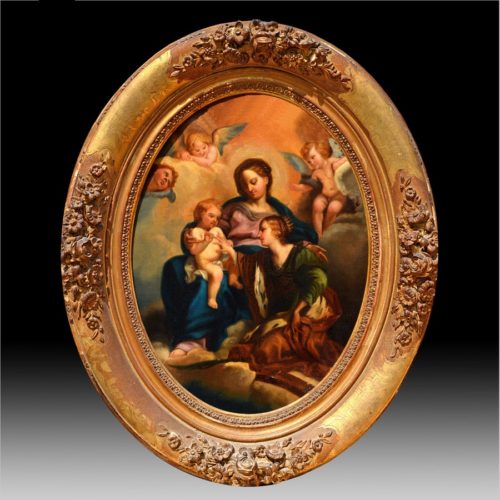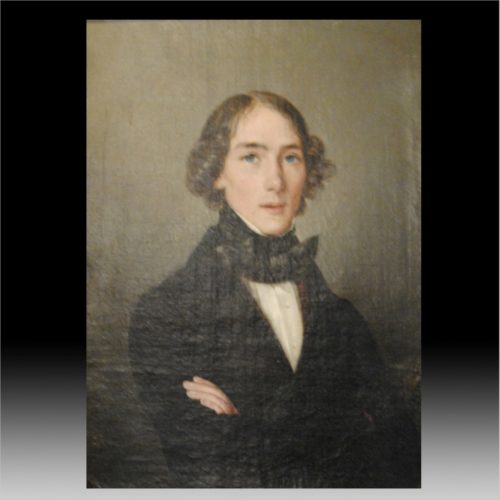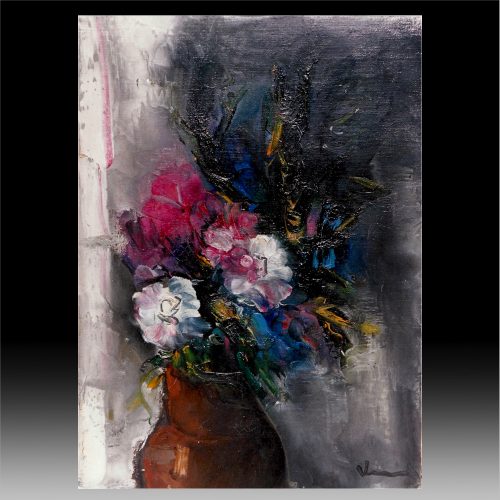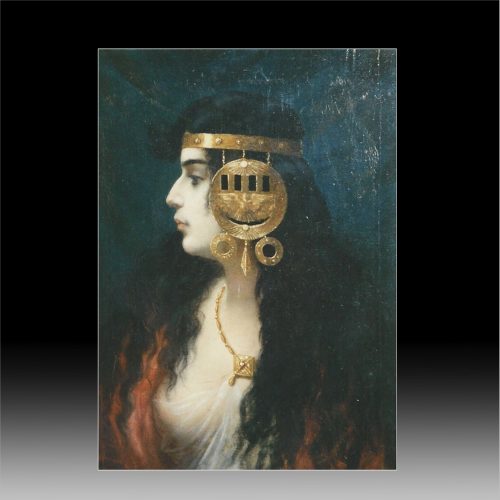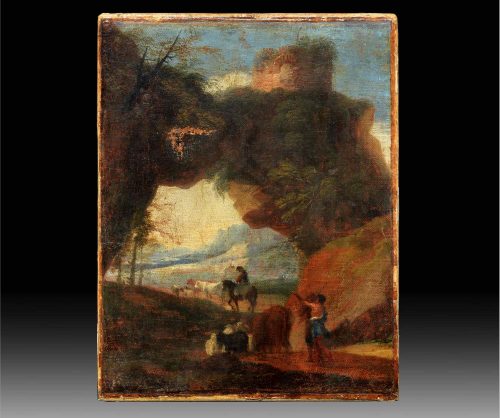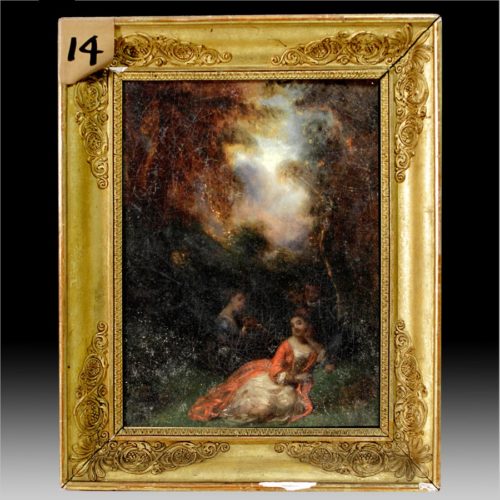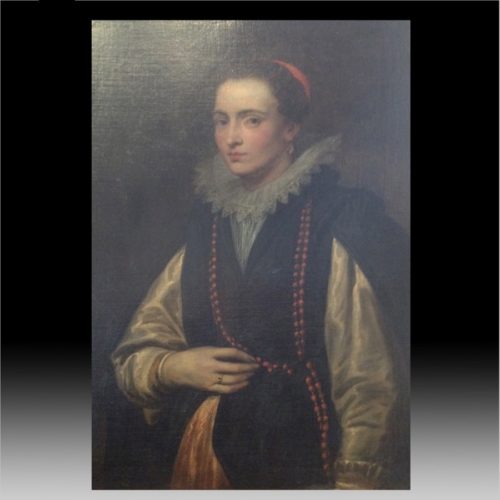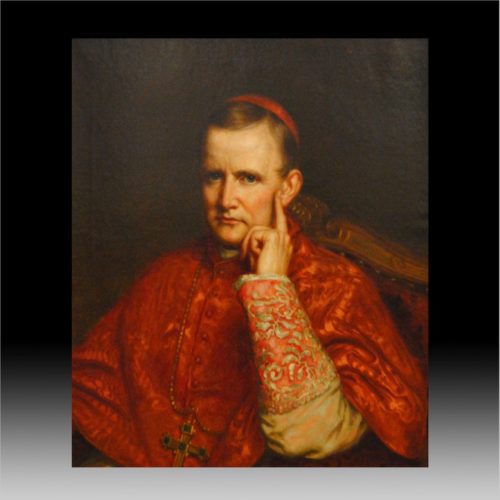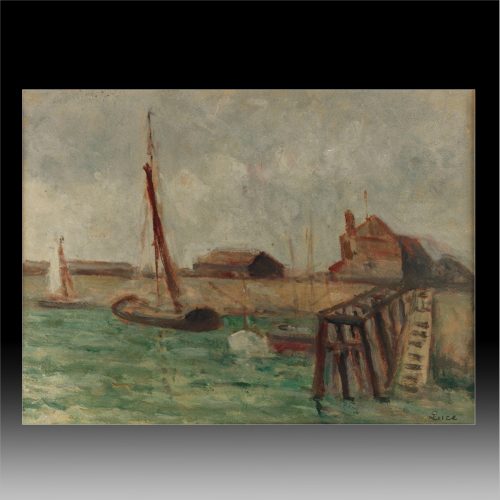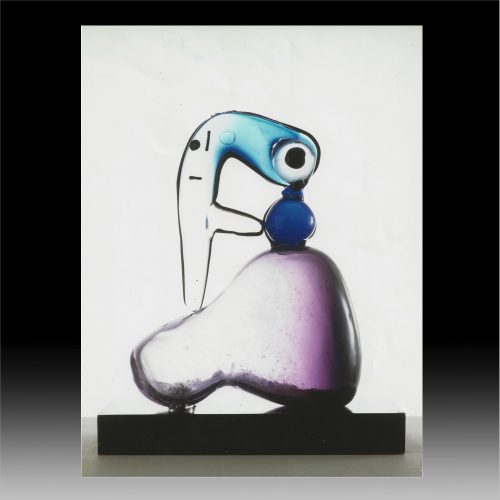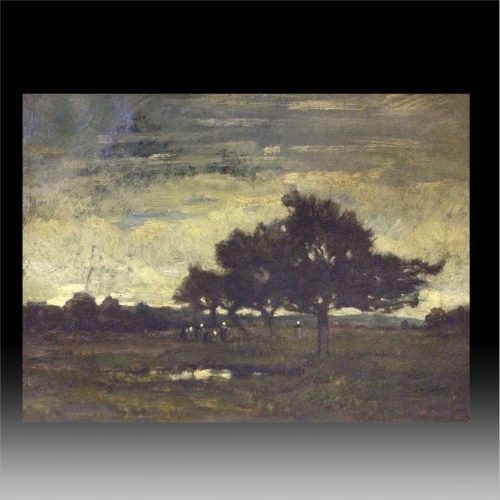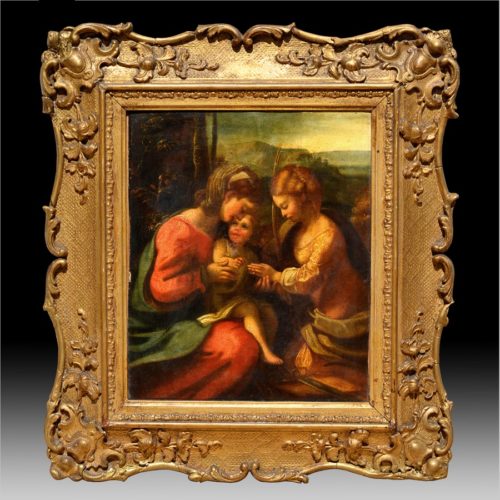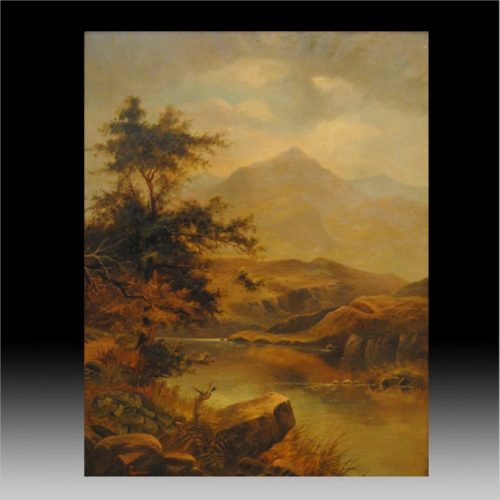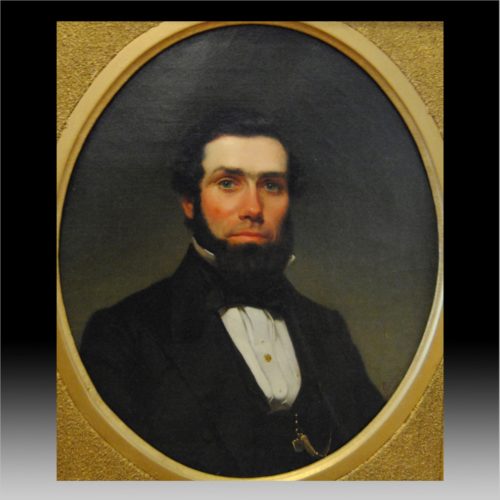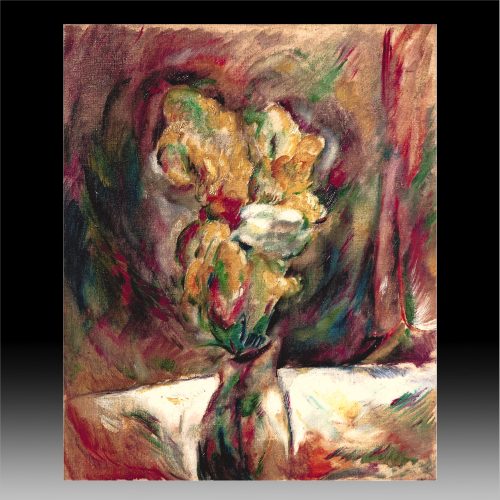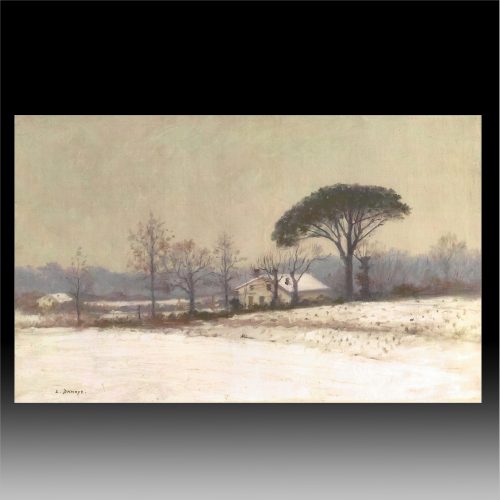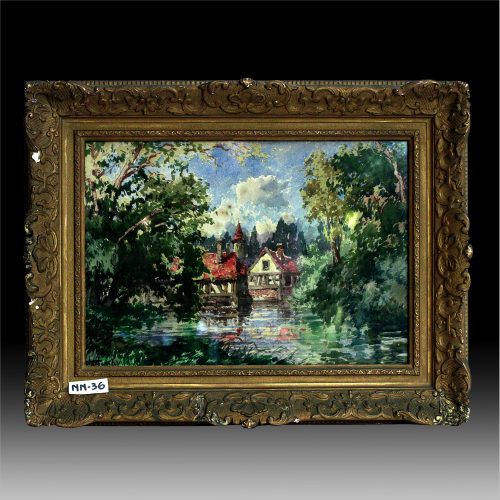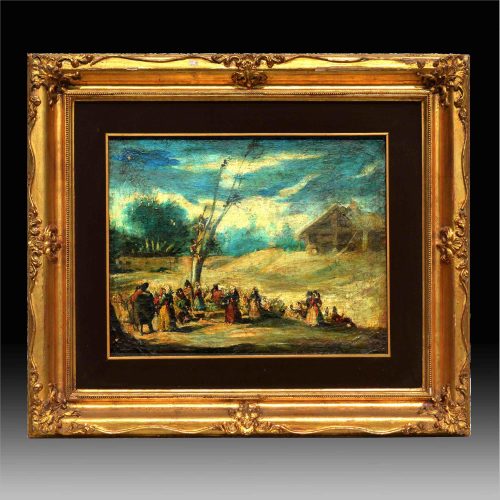View cart ““Playmates” by Charles Michael Varlat” has been added to your cart.
-
American School-
Artist: Unknown
“An Old canal”
20” x 14 ¼”
In 1870
@AC-NB
-
Jean Baptiste Camile Corot
(French, 1796-1875)
“Environs d’Arras-
Bords de la Scarpe”
Oil on panel
12 ½”x 16”
Vente stamp on the reverse
Painted in 1860-65
COA by M. Dieterle
«I'Oeuvre de Corot», 1965,
vol.III, pp. 124-125 no.1592
PROVENANCE:
The Artist's Studio; sale, Hotel
Drouot, Paris May 26-28 1875,#125
-
Charles Felix Edouard Deshayes
(French, 1831-1895)
Windmill Near Paris
Signed and dated ‘Ch Deshayes 1874
Paris’
Oil on canvas
26x 32 in. (66 x 81.2 cm)
-
James Clark
(British, 1858-1943)
"Black Horse in a Stable"
Oil on canvas
17 x 21 inches (43.2 x 53.3 cm)
Signed
-
Unknown Artist
19th Century
“Outdoor Scene”
-
Antonio Joli (Italian, 1700-1777)
“Figures Amongst Classical Ruins”
Oil on canvas
15 ¼ x 30 ½ inches
(38.7 x 77.5 cm)
Antonio Joli or Ioli (1700 – 29 April 1777) was an Italian painter of vedute and capricci. Born in Modena, he first was apprenticed to Rafaello Rinaldi. He then studied in Rome under Giovanni Paolo Panini, and in the studios of the Galli da Bibbiena family of scene-painters. He became a painter of stage sets in Modena and Perugia. In 1732 he moved to Venice, where he worked as stage-painter for opera productions at the Teatro di San Giovanni Grisostomo and the Teatro San Samuele of the Grimani family. In 1742 he went to Dresden, and then to London (1744–48) and Madrid (1750–54).
-
Francesco Solimena (Italian, 1657-1747)
“The Mystic Marriage of Saint Catherine”
Oil on canvas, Oval
12 7/8 x 9 5/8 inches
(31.8 x 24.7 cm)
CL102794-97
430602-2
@NB-1040
#61
-
Dunlavy
Portrait
Former Property of Great Grandson of A. Lincoln
Oil on canvas
9 ½ x 13 inches
@AC-NB
-
Maurice de Vlaminck
(French, 1876-1958)
“Vase de fleurs"
Oil on canvas
15”x 18 ¼”
Signed lower right
COA by Wildenstein Institute
-
C Kleemann
(19th/20th Century)
Salome
signed,
23 x 17 5/8 in.
-
Artist Unknown,
19th Century
Figure and Animals Scene
-
Jean A. Watteau (French, 1684-1821)
Women in Nature
Oil on canvas
12 ¾ x 9 ½ inches
S71791-173
142001-3
@AL 7/13
-
Sir Anthony van Dyck
‘Portrait of the Marchesa Lomellini-Durazzo, three quarter length, in a black Coat and white Sleeves’
oil on canvas
33 5/8 x 24 in.
85.4 x 61 cm.
CL102794-266
5115602-2
@AC-sAlbert.
-
George Peter Alexander Healy
1808-1894
Portrait of Cardinal John McCloskey
Oil on Canvas
25” x 30”
Signed top right and dated
SLOCT2281-127
AC16000
-
Maximilien Luce
(French, 1858–1941)
“Le chenal a mare
basse, honfleur”
Oil on paper laid down
on canvas
10 ¼” x 13 ½”
Painted in 1928
COA by Jean Luce
-
Pablo Picasso
(Spanish, 1881-1973)
“Figura (Portrait of
Jaqeline)”
Glass sculpture on wooden stand
17.5”x 14”x 5”
Signed on the base “Picasso, Fucina Degli Angeli, Venezia, Hermano Nason”
A second signature “P. Picasso 964 n FA 2/3”
COA by Comite Picasso
PROVENANCE:
Peggy Guggenheim Collection
V. del Leoni, Venice
-
Georges Bonnemaison
(French, d. 1885)
‘Harvesters In A Landscape’
oil on canvas
13.5 x 12 in.
-
Antonio Allegri da Correggio
“The Mystic Marriage of Saint Catherine”
Oil on canvas
10 ½” x 9”
(26.7 x 22.8 cm)
Antonio Allegri da Correggio (August 1489 – March 5, 1534), usually known as Correggio (Italian), was the foremost painter of the Parma school of the Italian Renaissance, who was responsible for some of the most vigorous and sensuous works of the 16th century. In his use of dynamic composition, illusionistic perspective and dramatic foreshortening, Correggio prefigured the Rococo art of the 18th century. He is considered a master of chiaroscuro.
In 1503 he was apprenticed to Francesco Bianchi Ferrara in Modena, where he probably became familiar with the classicism of artists like Lorenzo Costa and Francesco Francia, evidence of which can be found in his first works. After a trip to Mantua in 1506, he returned to Correggio, where he stayed until 1510.
-
D. Lawrence R.A.
“Lake”
Oil on canvas
35” x 28 ½”
Signed
@AC-NB
-
John George Brown
1831-1913
Portrait of a Man
Oil on canvas
10 ½” x 12 ½”
AC12000
AC28000
@AC-NB
-
Yasuo Kuniyoshi
(American, 1893-1953)
“Vase with flower”
17”x 14”
Oil on canvas
Painted in 1918
COA by B. Usui
Yasuo Kuniyoshi (Kuniyoshi Yasuo, 1 September 1893 – 14 May 1953) was an American painter, photographer and printmaker. Kuniyoshi was born in Okayama, Japan in 1893. He migrated to America in 1906, choosing not to attend military school in Japan. Kuniyoshi originally intended to study English and return to Japan to work as a translator. He spent some time in Seattle, before enrolling at the Los Angeles School of Art and Design. Kuniyoshi spent three years in Los Angeles, discovering his love for the arts. He then moved to New York City to pursue an art career. Kuniyoshi studied briefly at the National Academy and at the Independent School in New York City, and then studied under Kenneth Hayes Miller at the Art Students League of New York. He later taught at the Art Students League of New York in New York City and in Woodstock, New York. Nan Lurie was among his students, as was Irene Krugman. Around 1930, the artist built a home and studio on Ohayo Mountain Road in Woodstock. He was an active member of the artistic community there for the rest of his life.
-
Pierre Emmanuel Damoye
(French,1847-1916)
‘A Wintery Day’
signed ‘E.Damoye’ lower left
oil on canvas
15x 24 in. (38 x 61 cm)
-
Georges William Thornley
(British, b. 1857-1935)
‘The Watermill’
signed, watercolor on paper
11 x 15 ½ in. (27.9 x 39.4 cm)
Georges William Thornley (1857–1935) was a French painter and printmaker. A student of the French landscape painter Eugène Ciceri and Edmond Yon, Thornley became a successful artist remembered for his seascapes from Normandy and his landscapes from the French and Italian Rivieras. He was the son of a Welsh immigrant Morgan Thornley. He also was a talented watercolorist, engraver, and lithographer. His lithographs after the works of Corot, Pissarro, Degas and Puvis de Chavannes were acclaimed by his peers and awarded at the Salon de Paris.
His paintings were exhibited beginning in 1878. He won the Mention of Honor in 1881 and a Third Class medal in 1888. Thornley embraced the Impressionist movement early in his career, which brought him much success. His style characteristically has bold brushwork and thick "impasto." It recreates the "impression of a panorama", capturing the fleeting moment in its inner light and color. This open landscape is an example of what the artist excelled at: successful color effects which are highly decorative but stay true to nature.
-
Unknown Artist
19th Century
“A Gathering”
15 x 19 in.

